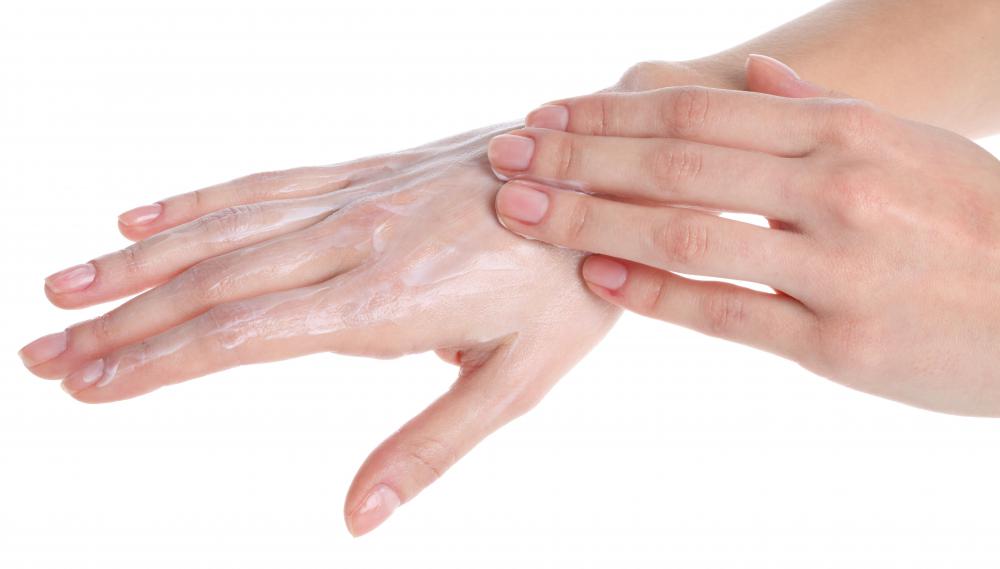At BeautyAnswered, we're committed to delivering accurate, trustworthy information. Our expert-authored content is rigorously fact-checked and sourced from credible authorities. Discover how we uphold the highest standards in providing you with reliable knowledge.
What are the Different Types of Whitening Soap?
Papaya soap, glutathione soap, and black licorice soap act as skin-whitening soaps and claim to fade dark spots, mitigate melasma, and brighten the complexion. A skin-whitening soap offers an alternate route to depigmentation for people who want to lighten skin without using skin-whitening creams laden with hydroquinone, mercury, and steroids. Most whitening soaps claim to be completely natural and largely based on plant ingredients. In order to successfully whiten skin, these soaps must either remove the darkened epidermis or halt the production of melanin in skin cells.
Generally, papaya soaps have bits of real papaya suspended in a coconut oil and a palm butter base. They are claimed to work because papayas contain the enzyme papain, which weakens protein bonds. Since the skin is primarily composed of protein, papain is able to break down the epidermis and slough off darkened skin, thereby revealing brighter skin underneath. Generally, it is considered a natural exfoliant.

Papain, however, rarely works alone in papaya soaps. The ingredient kojic acid is often added as a second exfoliant. This ingredient, according to some laboratory studies, can be linked to cancer. People who worry about this can choose papaya soap without kojic acid.
Papaya soaps — considered mild skin bleachers — can result in skin peeling and irritation. The peeling is generally desired because it is a part of the dark skin removal process. Irritation, however, can sometimes be a result of an allergic reaction to papain. Acne flare-ups are also possible with papaya soap but are generally considered temporary.

Black licorice soap is another mild skin-whitening soap. Instead of relying on exfoliation, licorice extracts in this soap purport to interfere with melanin production in skin by blocking the enzyme tyrosinase. Black licorice soap is often used in conjunction with an exfoliating soap because it claims to prevent the newly revealed skin from darkening excessively. Many users alternate between papaya and black licorice soaps, choosing to use the papaya soap until they start to peel. Then, they generally switch to the melanin-inhibiting licorice soap.

Generally considered a moderate to strong whitening soap, glutathione soap contains the L-glutathione enzyme, which is produced naturally in the body. This enzyme is a type of antioxidant that can protect the skin from aging and darkening. L-glutathione contains sulfur — an element credited with lightening properties whether it’s used topically or internally. Some glutathione soaps also contain the ingredient arbutin, which reduces melanin production in the skin by preventing the activity of the tyrosinase enzyme.

To benefit from a whitening soap, most users wet the soap, work up a light lather, and leave the lather on the skin for two to five minutes before rinsing multiple times with clean water. After several days of washing skin once or twice a day with a whitening soap, if there is no irritation, some users leave the lather on for as long as 10 minutes before rinsing. After rinsing, many users apply a sunscreen because whitened skin can be more sensitive to ultraviolet (UV) rays.
AS FEATURED ON:
AS FEATURED ON:















Discuss this Article
Post your comments